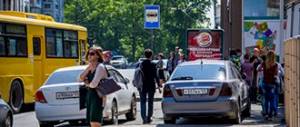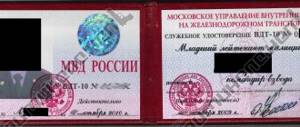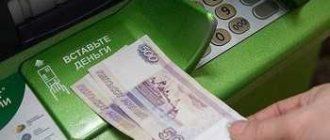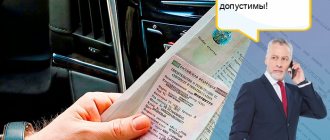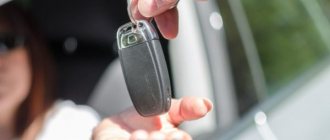Many motorists have always believed that the traffic police can stop motorists only at stationary checkpoints in accordance with Order of the Ministry of Internal Affairs No. 185. But it does not indicate where the inspector can stop the car. The Order only puts into effect the Administrative Regulations, which must be referred to on this issue. At the time of writing this review in 2021, there are no changes to this order.
The regulations may change and be adjusted. The updated version came into force in 2021, and a new Order of the Ministry of Internal Affairs No. 664 was issued for its approval. The new version of the regulations includes a condition under which it is possible to check the documents of drivers outside a stationary post. Let's figure out what reasons exist for this.
- Stop grounds
- Is the traffic police inspector required to show orientation?
- How can you stop a car?
- Procedure for checking documents
- What are they checking on foreigners?
- Conclusion
Stop grounds
The new version of the law gives the traffic police inspector the right to stop a car driver on the road not at a stationary post, but at any place in order to check documents. However, the inspector cannot choose such a place on his own; for this he needs an order from his superiors. These changes regarding stopping outside a stationary post were made due to a large reduction in traffic police posts. This, in turn, is due to the massive reduction of employees of the State Traffic Inspectorate.
In fact, inspectors were previously able to stop vehicles in any place if special events were being carried out. Therefore, the new order changed almost nothing, especially in urban areas. Inspectors will easily find the reason for the stop, and drivers usually do not argue with them. After all, it’s easier to get and show your license and compulsory motor liability insurance policy than to enter into disputes with the police, which will cost you more.
Service areas for inspectors are established by analyzing the accident rate in a given area, identifying dangerous places, difficult road conditions, and operational reports. The regulations prohibit the inspector from smoking while communicating with the driver, oblige him not to be rude, to be polite, and to refrain from discrimination of various kinds. You cannot make unlawful accusations or insult.
You can stop for the following reasons:
- Violation of traffic rules, which is recorded by technical means or visually.
- Information about the involvement of the driver or passengers in a crime or accident was received.
- There is information about the theft or search for a car.
- The driver is a witness to an accident, a crime, stopped to give evidence.
- Participation of witnesses.
- The police officers urgently needed a car.
- Prohibition or restriction of vehicle movement.
- Ensuring unhindered and safe passage for special services vehicles.
- Providing assistance by the driver to other road users or the police.
- Carrying out an event, execution according to special orders.
- Scheduled check. The car is checked for being wanted, transporting prohibited substances, or wanted people.
- Threat to traffic safety due to breakdown of technical equipment, road works, man-made accidents, natural disasters, emergencies.
- To check documents: driver’s license, for cargo transportation.
- Suspicions on the wanted list, participation of the driver in the crime.
Now there is no point by which documents could be checked at stationary posts. Therefore, the inspector can stop the vehicle to check documents anywhere. But this should happen if there is a basis for verification.
The difference between the two Orders 185 and 664 is that the grounds for the stop were previously stated. This was wrong. But the first point is that the signs of a violation, according to the inspector’s suspicions, are the testimony of witnesses and landmarks. If he received an indication on the road that a certain car was involved in a crime, then the inspector would have every reason to stop him.
Special events are also a good reason to stop at a non-static post. This applies to the following events: “sober driver”, “child safety” and others.
Punishment for failure to comply with the inspector's requests to stop
The driver is strictly prohibited from ignoring the request to stop the car, even if it seems to him that the police officer is trying to stop the car without reason. If for any reason the car does not stop at the request of the police officer, the situation can develop in two ways. The inspector will also simply ignore this behavior; most often this happens when trying to inspect motor vehicles. This is due to the fact that a chase can have extremely disastrous consequences for a motorcyclist. In such situations, inspectors most often transmit information to all nearby posts with a focus on a specific car. If you ignore the requirement to stop here too, then a chase will be almost inevitable. During a chase, the inspector first demands a stop through a loudspeaker, and in case of disobedience, he has every right to use weapons. After being detained, a motorist most often faces a fine of 500–800 rubles. But this offense can be considered from the point of view of Article 19.3 of the Code of Administrative Offenses, Part 1 - disobedience to employees during execution, and this is a completely different punishment - up to imprisonment.
How can you stop a car?
To stop a car on the road, the traffic police inspector makes a special gesture. The request to stop can be made using a loudspeaker or by hand. In addition, a traffic police officer can use a disk with a red glowing signal or a rod. The inspector shows a place to stop the car. At night, the signal is given by light signals, if possible.
The inspector does not have the right to stop the car in places where this is prohibited according to the Traffic Rules. However, there are exceptions. For example, a driver was stopped to help stop a crime or cause harm to health.
Rights and responsibilities of an inspector after a stop
After the car has stopped at the request of the traffic police inspector, he is obliged to:
- Approach the driver without delay.
- Say hello, name your title, position, last name, first name, patronymic.
- When addressing the car owner, place your right hand on the headdress.
- State the reason for stopping.
- Show your driver's identification card upon request. Don't forget to write down the employee's details on the document.
- Demand to hand over documents without holding devices, remind the rights and obligations of the car owner if he is involved as a witness.
- Do not delay stopping time.
- Explain the essence of the offense, if it occurs.
In addition to his duties, the traffic police inspector has the right to ask the driver to get out of the car in the following situations:
- The driver showed signs of illness or intoxication.
- To conduct a personal search, inspection of a vehicle or cargo.
- To verify vehicle unit numbers with data in documents.
- If it is necessary for the driver to participate in providing assistance or for procedural actions.
- To eliminate a machine breakdown or cargo transportation disruption.
Knowing these rights and responsibilities of police officers, do not interfere with their implementation and do not break the law.
What should a traffic police officer do after stopping a car?
Many drivers are interested in the question of whether the employee who stopped the car is obliged to explain the reason for stopping your car, because there may be several such checks per day. Everything is according to the same regulations, he must explain the reasons for what is happening and cannot prevent the driver from independently familiarizing himself with the ongoing “special events” or orientations. An important nuance will be the fact that all supporting documents may be located at a stationary post and in order to familiarize yourself with them, the driver will have to, after checking, get there and familiarize himself with them. A traffic police officer can only have an oral orientation and is not required to present any supporting documents.
The stopping process itself occurs as follows
The traffic police inspector, using a red rod or disk, first points to your vehicle, and then clearly to the stopping place. If visibility is poor, an employee can also use special lighting devices or loudspeakers. After stopping a vehicle, a traffic police officer usually acts according to the following scheme:
- The inspector, without undue delay, is obliged to approach the car from the driver’s side and introduce himself, giving his full name, rank and position (at the driver’s request, he can show his ID). At this time, he must put his hand to the headdress.
- The employee explains the reason for the stop and asks to present documents for verification or explains other requirements, for example, in the case of involving the driver as a witness.
- The driver does not have to leave the car, except in situations where it is necessary to undergo additional checks - testing for alcohol intoxication, troubleshooting problems with the car or transporting goods, the need to check the trunk, filling out documents, etc. To undergo a number of procedures if necessary, he must or to a stationary traffic police station.
- The inspector may urge you to move your vehicle to another location if it is causing a nuisance to other drivers.
Procedure for checking documents
Road patrol officers can not only stop cars outside a stationary checkpoint, but also check documents. Article 106 of the Administrative Regulations establishes the grounds on which the police have the right to check documents.
- The inspector discovered a violation of the traffic rules by the driver.
- An information has been received regarding the involvement of the driver or his car in an accident, offense, crime, or search for a vehicle.
- When carrying out special actions to prevent road accidents and reduce their consequences.
The legislation also establishes what exactly an employee can check on the road.
According to Article 107 of the Administrative Regulations, the grounds for checking documents may be:
- Detection of signs of traffic violations, the reason for initiating a case for an offense.
- Signs of forgery of documents for cargo or vehicle were revealed.
- The orientation and suspicion of a person in committing a crime or offense.
- Bringing the driver as an attesting witness or witness.
They can also check the license to perform any activity on the following grounds:
- Identification of violations of standards in the field of road safety.
- Carrying out special measures to prevent accidents.
- Inspection of cargo, vehicle, and other cases related to the performance of duties of police officers.
During the inspection of documents, unit numbers, license plates, the inspector inspects them visually. But if necessary, devices are used to detect counterfeiting. Technical devices are used if there are signs of external changes in markings, falsification of documents, or discrepancies between records and information from the operational and reference services of the Ministry of Internal Affairs.
A police inspector can use special federal records and search data in his work. When checking cargo, similar procedures are carried out. But the compliance of the voucher and invoice with the transported cargo and the license card is additionally monitored. Signs of forgery are found in the documents: changes in markings, damage, abrasions, corrections.
Reasons why you can stop your car
The administrative regulations clearly indicate all the reasons why a vehicle can be stopped, and not all of them are aimed at checking documents:
- An obvious incident occurred, for example, overtaking in a prohibited place, exceeding the speed limit, etc. Violations of this type can be recorded by the inspector visually or using special means.
- The traffic police officer has an indication that the driver is involved in an accident or other type of crime. The same may apply to car passengers.
- There are suspicions supported by evidence that the car was stolen or is wanted.
- It is necessary to obtain testimony as a witness to a traffic accident or other crime.
- If necessary, have a witness.
- There was a need to use the car, for example, by a traffic police instructor or a doctor.
- Assistance is required for victims due to a lack of special vehicles.
- When carrying out a number of activities to carry out orders, such as transporting prohibited goods or hiding persons. In this case, document checks and a superficial inspection of the interior and trunk are allowed. For a more thorough inspection, the police officer must show a document authorizing such actions.
- When carrying out a number of special events - safe transportation of children, sober driver, etc.
- Urgent stop of general traffic as a result of a natural disaster, fire, or man-made accident.
- During a temporary delay to allow a convoy of cars of cyclists or runners to pass during various events.
- Checking documents for driving a vehicle, etc.
What are they checking on foreigners?
Stateless persons or foreign drivers can be checked:
- Identity passport or other similar document.
- Migration documents, foreign visa.
- Driver license.
- Vehicle documentation, customs papers when importing a vehicle from abroad.
- Insurance policy or other document that is similar to compulsory motor liability insurance according to international rules.
- Entry documents, permits.
A foreigner who is a passenger, a pedestrian, or has no citizenship may be checked for a migration card, visa, passport, entry documents, or permits to visit the region.
For what reasons can an inspector stop a driver?
List of reasons for which a car can be stopped outside a permanent post:
- When a traffic police officer detects a driver violating traffic rules.
- If the make, model and color of the vehicle matches the description of a previously stolen vehicle.
- To take evidence from a motorist who was an unwitting witness to an accident.
- So that the motorist can be seen as an attesting witness.
- When the inspector urgently needs a car, for example, to catch up with a criminal or urgently take the victim to the hospital.
- So that motorists give way to special vehicles.
- When a motorist needs help from an inspector or other motorists, passengers, or pedestrians.
- Upon receiving information from the dispatcher that the driver or his passengers may be in a vehicle matching the description.
- To temporarily prohibit or restrict the movement of vehicles.
- During an inspection going according to plan.
- During events carried out on orders from management.
- When motorists may be in danger (defective car, road or bridge repairs, accident).
- To make sure that you have documents for the right to drive, use this vehicle and transport cargo.
Ways to stop motorists.
Drivers should remember that only a traffic police officer can stop them. A trainee of the road patrol service, a local police officer, a civilian in the uniform of a traffic controller are deprived of the right to stop vehicles, since they are not vested with the function of a traffic controller.
In order to stop the desired vehicle, a traffic patrol officer voices this requirement through a loudspeaker or points a baton in the direction of a specific car. Then the baton points to the place where the motorist should drive up. In the evening, a traffic patrol officer must use light signals for safety reasons.
A traffic police officer does not have the right to forcibly stop vehicles:
- Buses and similar vehicles filled with passengers.
- Vehicles belonging to diplomatic missions.
- Vehicles belonging to consular offices of foreign states.
- Mopeds.
- Motorcycles.
- Motor scooters.
A traffic police officer is prohibited from stopping motorists for:
- Railway passages.
- Mountain roads.
- Mostakh.
- Roads with poor visibility.
- Overpasses.
- Overpasses.
- In the tunnels.
After the motorist has stopped, the highway patrol officer must:
- Immediately approach the motorist who does not need to get out of the car.
- Greet the motorist politely.
- State your last name, first name, patronymic, title.
- Explain to the motorist why his vehicle was stopped.
- When asked by a motorist, present your ID, but without giving it away.
- Ask the motorist to remove his own documents from the cover and hand over the documents.
- If a traffic police officer needs a motorist as a witness, then his rights and responsibilities must be explained.
- If a motorist is stopped for not following the rules, the highway patrol officer must explain this to the motorist.
- A traffic police officer is prohibited from stopping a motorist for a long period of time.
Legal reasons for stopping your car
- The document that guides the traffic police officer when working is the “manual.” This document specifically states the reasons why a vehicle driver may be stopped by an inspector.
- Violation of road rules by the driver or passengers.
- Availability of information about the involvement of the driver or passengers in any crime, violation or accident. These may be orientations, information from the duty officer, visual signs and others. In this case, you can call the duty officer to clarify information about your involvement in a particular incident.
- Availability of information that the vehicle is wanted, as well as the use of the vehicle for illegal purposes. For security reasons, you can also clarify the charges against you by calling the duty officer.
- The need to interview passengers or the driver about the accident, if there is information that they are witnesses to this incident. At the same time, the traffic police inspector must tell you that there is liability for giving false testimony, as well as the right not to testify against yourself and your loved ones.
- Execution of decisions of government bodies to restrict or prohibit traffic.
- Involving the driver of a car or his car to provide assistance to other road users or traffic police officers. As the driving instructors
, this case involves the seizure of a vehicle for operational work. You have the right to refuse to provide your vehicle, in which case you will be fined. - Inspection of documents for the right to drive a car or for the car itself, as well as for the cargo transported by this vehicle. The inspector can carry out this check only at traffic police posts, checkpoints or police control posts. Checks of driver's and registration documents are also permitted during special events.
Can an inspector check the technical condition of a car?
According to the regulations of the Ministry of Internal Affairs No. 664, the traffic police inspector has the right to check the technical condition of the vehicle in the event of a malfunction of the brake system or steering. If red reflective elements or devices emitting the specified color range are installed on the front of the vehicle. Also, a vehicle inspection can be carried out if:
- windows have darkening glass or film, the light transmittance of which does not meet established standards;
- sound and light signals were installed without the appropriate permits.
How and where to duplicate a state number - or is it better to replace it?
What documents prove identity?
In accordance with the regulations governing the activities of police officers, the traffic police inspector has the right to check:
- driver's license of the appropriate category;
- STS;
- PTS;
- insurance policy;
- permission to transport goods and passengers;
- a document confirming disability, if there is a similar sign on the vehicle;
- license, waybill, TTN.
Now you can get a technical inspection not only at the service station at the traffic police - how to find them?
For foreign citizens, in addition to the specified package of papers, a traffic police officer has the right to check a visa or migration card, an international certificate for the right to drive a vehicle.


